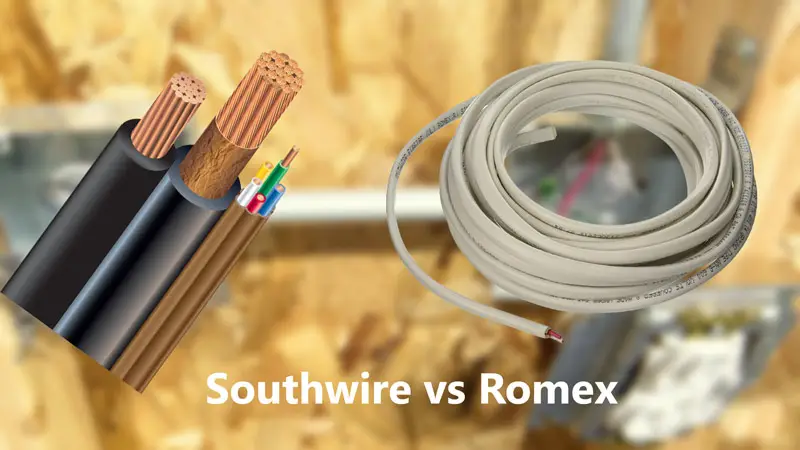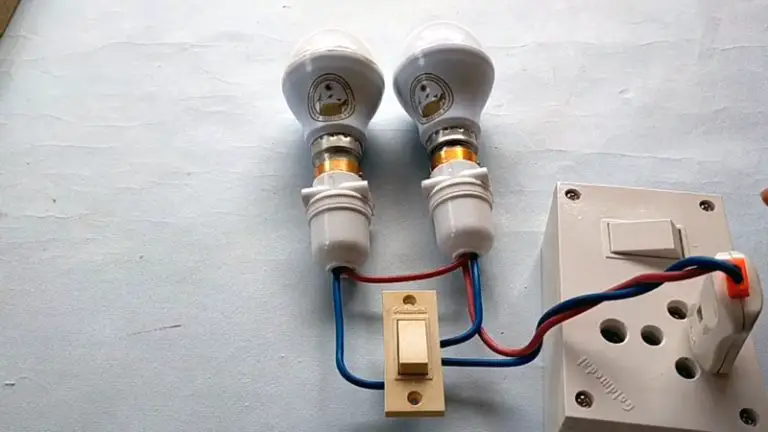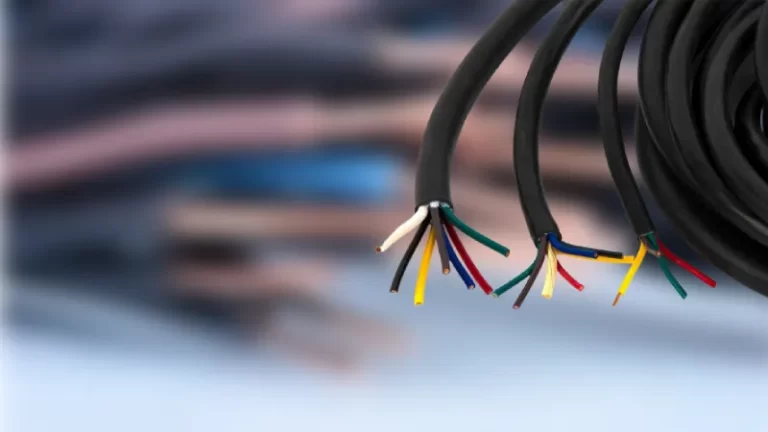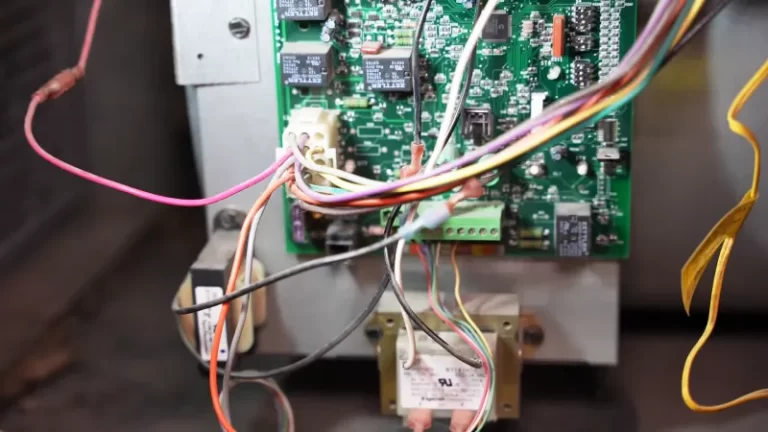Romex Vs Southwire – Is Southwire the Same as Romex?

When it comes to electrical wiring for residential projects, NM-B (non-metallic sheathed) cable is a popular choice. This type of cable is used for both exposed and concealed installations in dry locations and is known for its versatility and ease of use.
Romex product of Southwire well-known name for NM-B cable, and while they both meet the necessary safety standards and perform the same basic functions, they may have some differences in terms of features and characteristics.
In this article, we will compare other Southwire and Romex NM-B cables to help you decide which one is the best choice for your project.
You'll Learn About
Safety Standards
The National Electrical Code (NEC) sets out the safety standards for electrical installations in the United States. These standards apply to all types of electrical wiring, including NM-B cable, and are designed to protect people and property from the hazards of electrical shock, fire, and other dangers.
Both Southwire and Romex NM-B cable meet these safety standards and are approved for use in residential wiring applications.
To meet the NEC standards, NM-B cable must be made with certain types of insulation and jacket materials, must be marked with certain information, and must be installed in accordance with specific guidelines. Both Southwire and Romex NM-B cable meet these requirements, ensuring that they are safe to use in residential wiring projects.
It is important to note that while Southwire and Romex NM-B cable both meet the same safety standards, they may have different features and characteristics that could affect their performance or ease of use.
For example, one brand may have a thicker wire gauge or a different type of insulation, which could impact its electrical capacity or its resistance to heat. Ultimately, it is important to choose a brand of NM-B cable that meets the necessary safety standards and is appropriate for the specific needs of your project.
Features And Characteristics
There are several features and characteristics that can vary between different brands of NM-B cable, including Southwire and Romex. Some of the key differences to consider include:
Insulation Type
NM-B cable is typically made with PVC (polyvinyl chloride) insulation, but different brands may use different variations of PVC or other types of insulation. The type of insulation can affect the cable’s resistance to heat and moisture, as well as its overall durability.
Jacket Material
The outer jacket of NM-B cable is made of a non-metallic material, such as PVC or nylon. Different brands may use different types of jacket material, which can affect the cable’s flexibility, resistance to wear and tear, and overall appearance.
Number Of Wires
NM-B cable is available in different configurations, depending on the number of wires it contains. Southwire and Romex NM-B cables are both available in several different configurations, ranging from 2-wire to 4-wire, depending on the specific needs of the project.
Wire Thickness
The thickness of the wire in the NM-B cable is measured in gauge and is an important factor to consider when selecting the appropriate cable for your project. Southwire and Romex NM-B cables are available in various wire gauges, ranging from 14 gauge to 10 gauge, with a thicker wire having a higher electrical capacity.
Overall, the specific features and characteristics of the Southwire and Romex NM-B cable can affect the performance and ease of use of the cable.
For example, a cable with a thicker wire gauge may be better suited for high-power applications, while a cable with a more flexible jacket may be easier to work with in tight spaces. It is important to consider the specific needs of your project and choose a brand of NM-B cable that meets those needs.
Availability And Cost
Both Southwire and Romex NM-B cables are widely available and can typically be found at most home improvement stores and electrical supply outlets. However, the availability and cost of these brands can vary depending on a number of factors, including location and supplier.
In terms of availability, Southwire and Romex NM-B cable may be more readily available in certain areas, depending on the local market and the distribution networks of the manufacturers. For example, one brand may be more prevalent in certain regions of the country or may have a stronger presence at certain retailers.
Cost is another factor to consider when comparing Southwire and Romex NM-B cable. In general, the cost of NM-B cable can vary depending on the specific features and characteristics of the cable, such as the wire gauge, number of wires, and jacket material. Southwire and Romex NM-B cable may have different price points depending on these factors and may also be subject to fluctuations in the market.
Ultimately, the availability and cost of Southwire and Romex NM-B cable will depend on a variety of factors, including location and supplier. It is important to shop around and compare prices from different sources to ensure that you are getting the best deal for your project.
Tips While Working with the NM-B Cables
Here are some additional tips to consider when working with NM-B cable:
Follow The Manufacturer’s Instructions
It is important to follow the manufacturer’s instructions for the installation and handling of NM-B cable. This includes using the proper tools and techniques for cutting, stripping, and bending the wire, as well as following any specific guidelines for installation in different types of environments.
Use The Correct Wire Stripper
Using the correct wire stripper is essential for ensuring a clean, precise cut when stripping the insulation from NM-B cable. It is important to choose a wire stripper that is appropriately sized for the wire gauge of the cable you are working with, to avoid damaging the wire or creating jagged edges.
Secure The Cable Properly
NM-B cable should be secured in place using appropriate fixtures, such as cable staples or cable ties. It is important to avoid overloading the cable or stressing it excessively, as this can cause damage and potentially create a safety hazard.
Use Appropriate Cable Connectors
When splicing or connecting NM-B cable, it is important to use the appropriate connectors, such as wire nuts or terminal blocks. These connectors should be properly sized for the wire gauge of the cable and should be tightened securely to ensure a safe, secure connection.
Test The Circuit
After installing the NM-B cable, it is important to test the circuit to ensure that it is functioning properly. This can be done using a circuit tester or other appropriate testing equipment. If any issues are detected, they should be addressed immediately to prevent potential hazards.
Romex vs Southwire
Romex and Southwire are both brand names for non-metallic (NM) sheathed electrical cables that are used for branch wiring in residential and commercial buildings. Both Romex and Southwire cables are made by Southwire Company, LLC, a leading manufacturer of electrical wire and proper cable products.
One key difference between Romex and Southwire is that Romex is specifically designed for use in residential wiring applications, while Southwire is a more general brand that offers a wide range of electrical wire and cable products for various applications.
Both Romex and Southwire cables are made from high-quality materials and are designed to meet strict safety and performance standards. They are both suitable for use in branch wiring and can be used to supply power to outlets, switches, and other electrical devices in residential and commercial buildings.
In terms of performance, both Romex and Southwire cables are reliable and durable, and they are both easy to install. The primary difference between the two is the type of applications they are intended for, with Romex being specifically designed for residential wiring and Southwire offering a more general range of products.
Romex vs Southwire
- Purpose: Romex is specifically designed for residential wiring, while Southwire offers a wider range of products for various applications.
- Brand: Romex is the brand name of Southwire Company, LLC, while Southwire is the parent company.
- Material: Both Romex and Southwire cables are made from high-quality materials.
- Safety Standards: Both Romex and Southwire cables meet strict safety standards.
- Performance: Both Romex and Southwire cables are reliable and durable.
- Installation: Both Romex and Southwire cables are easy to install.
- Application: Romex is intended for branch wiring in residential buildings, while Southwire can be used in both residential and commercial buildings.
- Type: Romex is a non-metallic (NM) sheathed electrical cable, while Southwire offers a range of electrical wire and cable products.
- Variety: Southwire offers a more extensive variety of electrical wire and cable products, while Romex is focused on residential wiring.
- Popularity: Romex is more popular for residential wiring, while Southwire is a well-known brand for a variety of electrical wire and cable products.
Which is the Best Wire for House Wiring?
- Havells wires: Havells is a reputable brand and their wires are suitable for use in a wiring system.
- Polycab wires: Polycab is also a reputable brand and their wires are suitable for use in a wiring system.
- Finolex wires: Finolex is a well-known brand and their wires are considered to be of high quality and suitable for residential wiring.
- Syska wires: Syska is a well-known brand and their wires are suitable for use in a wiring system.
- RR wires: RR Wires are also considarable.
It is important to note that all the above mentioned wires are considered to be of good quality, but it is always best to check and follow the local codes and regulations for wiring in your area.
To Recap
Southwire and Romex are both well-known brands of NM-B (non-metallic sheathed) electrical wiring that is commonly used in residential projects. Both brands meet the necessary safety standards and are functionally equivalent, but they may have some differences in terms of features and characteristics.
When deciding between Southwire and Romex NM-B cable, it is important to consider the specific needs of your project and choose a brand that meets those needs. This may involve considering factors such as insulation type, jacket material, number of wires, and wire thickness.
Ultimately, the choice between Southwire and Romex, or any other brand of NM-B cable, may come down to personal preference or availability. It is important to ensure that any electrical wiring used meets the necessary safety standards and is installed correctly.



